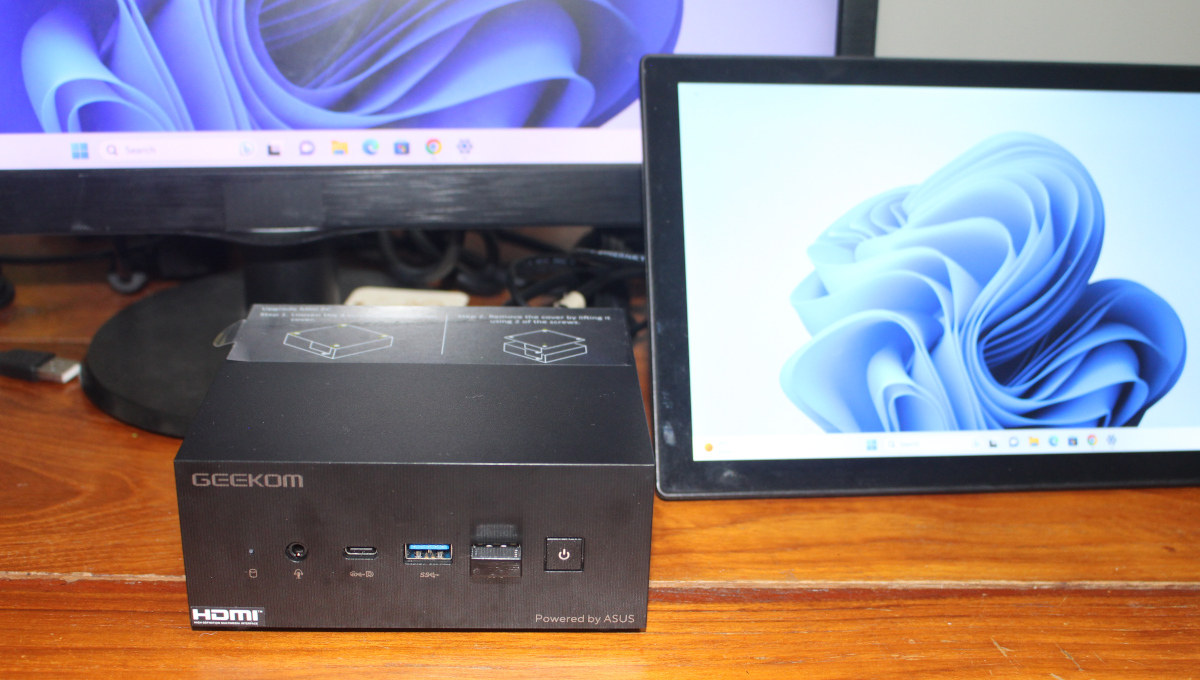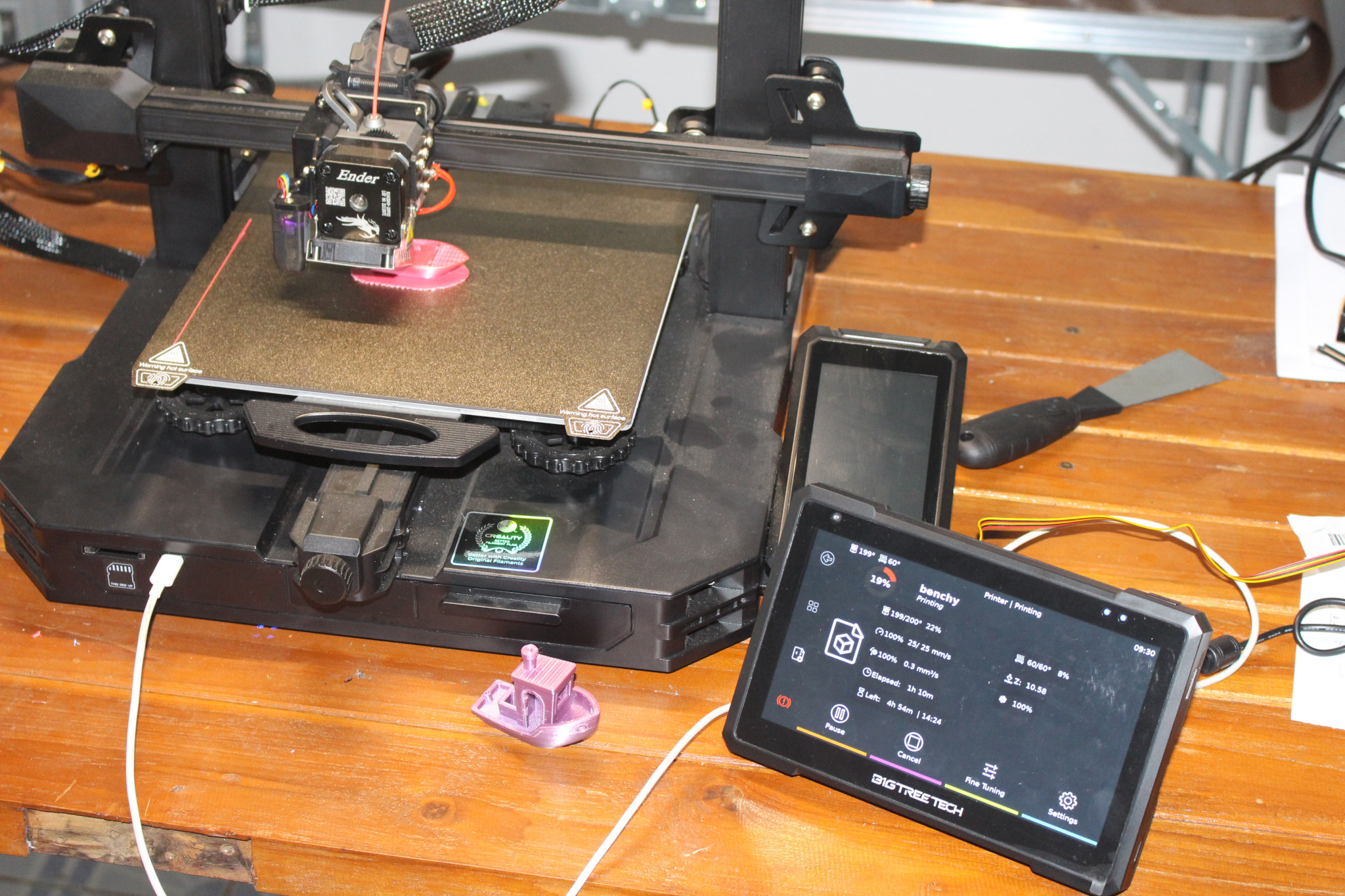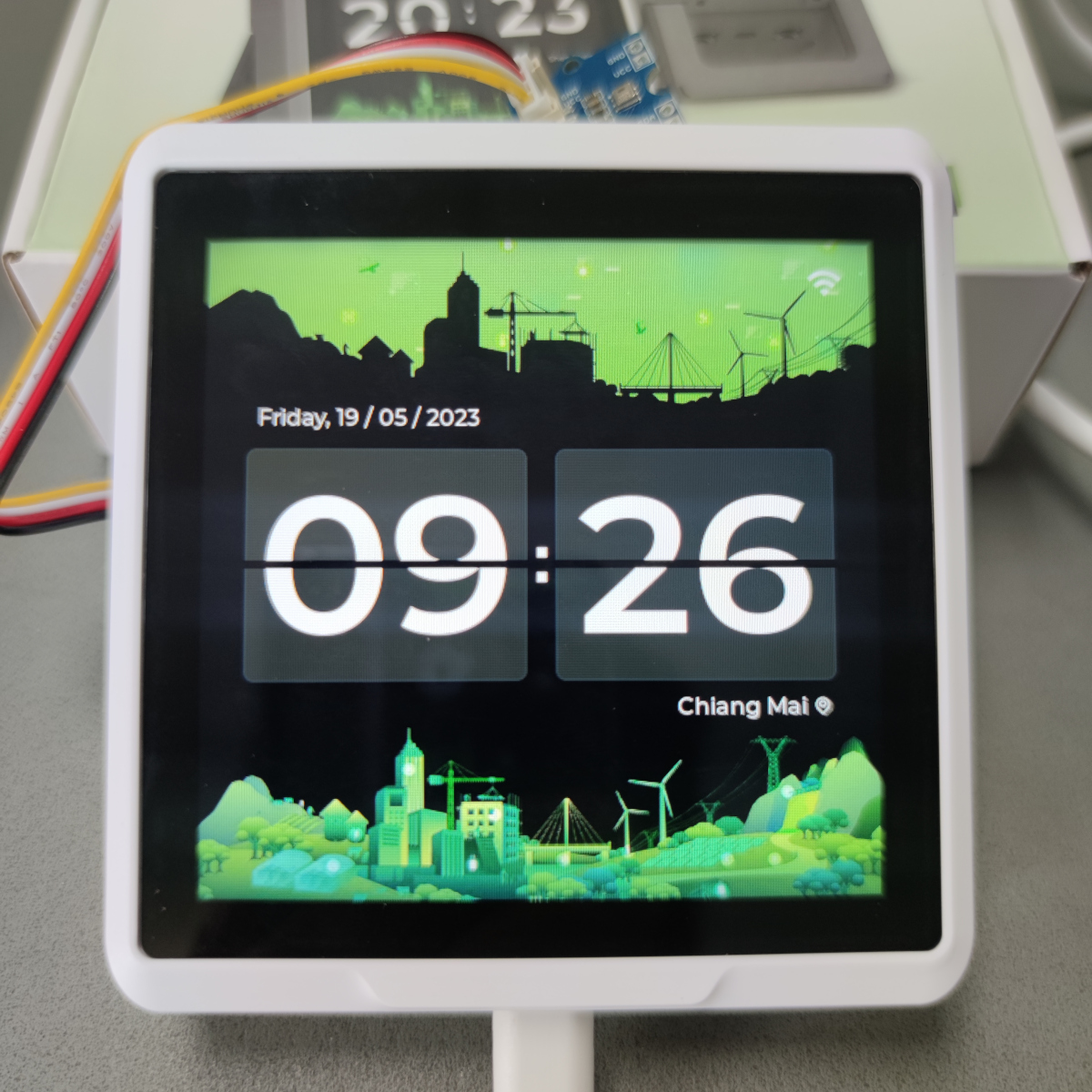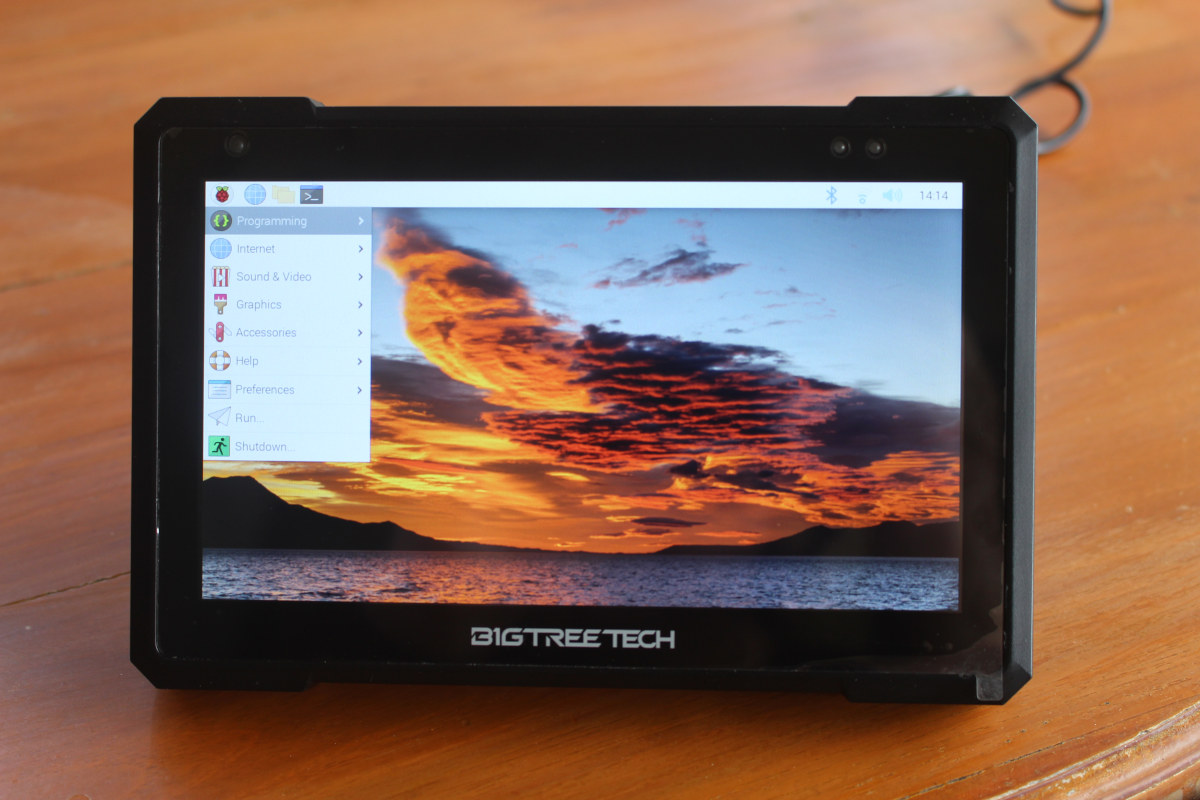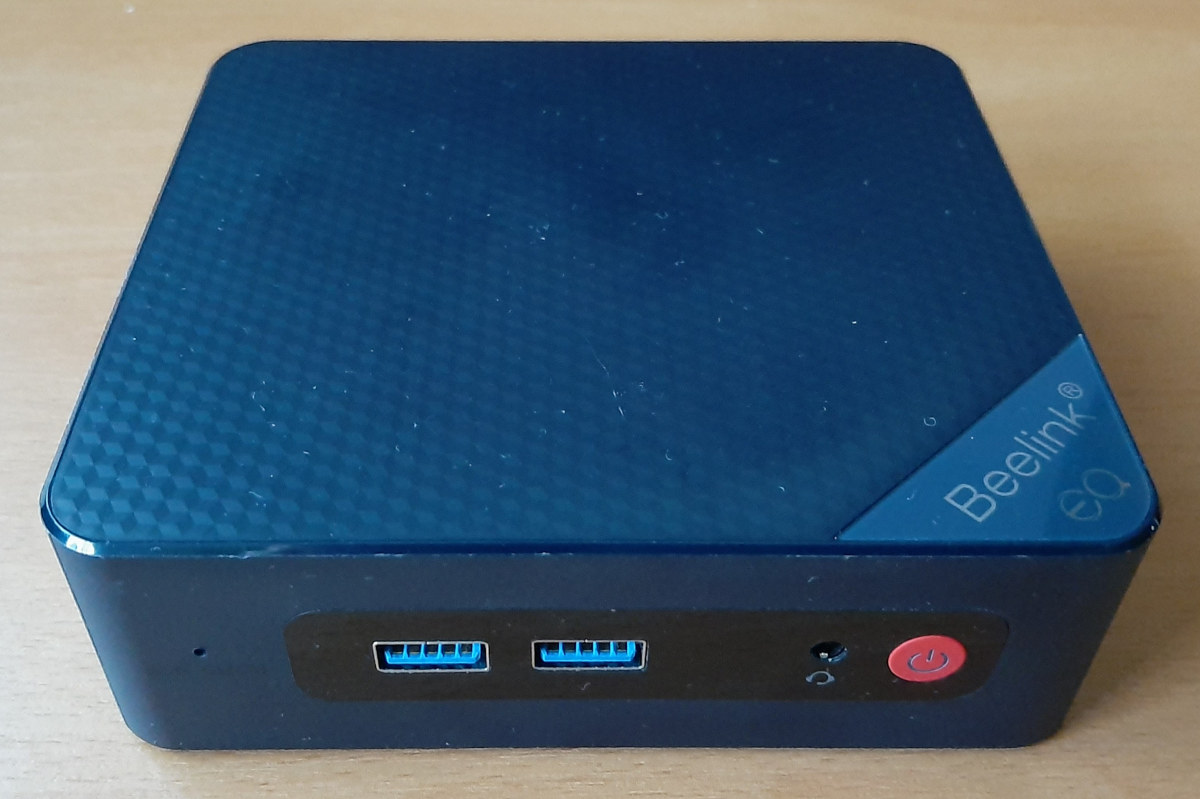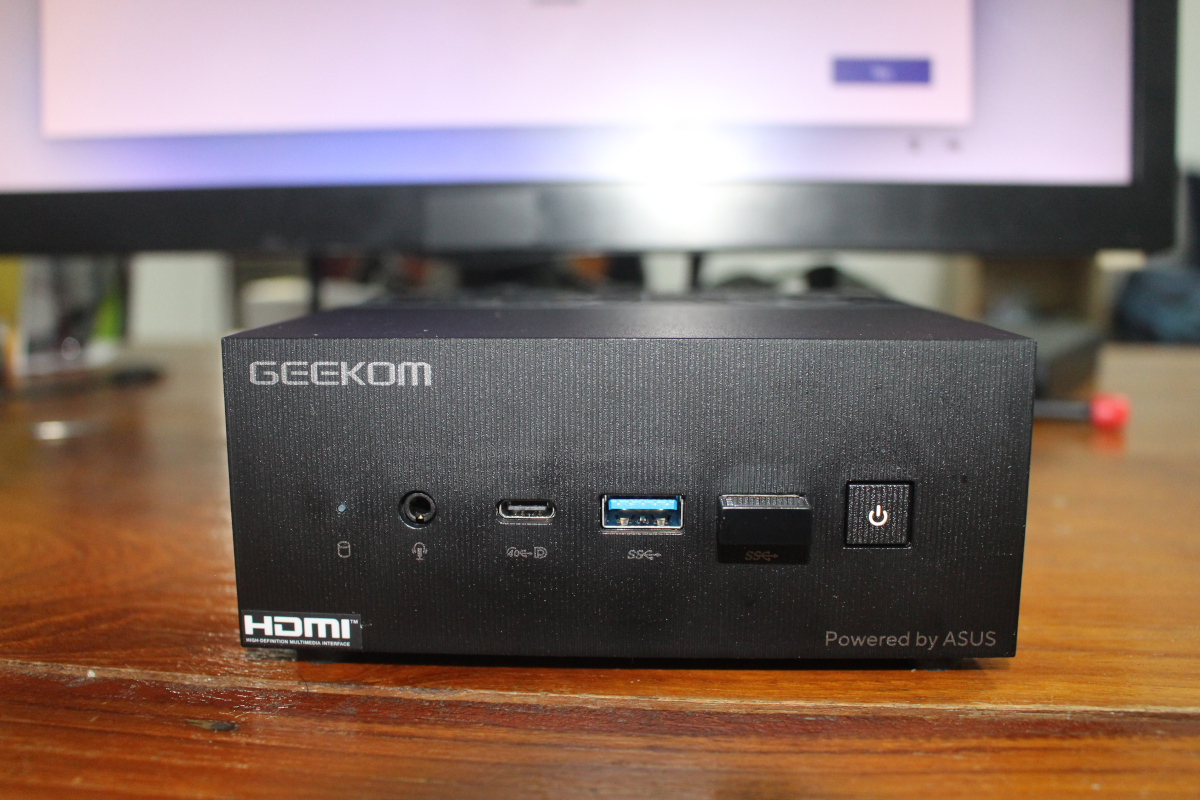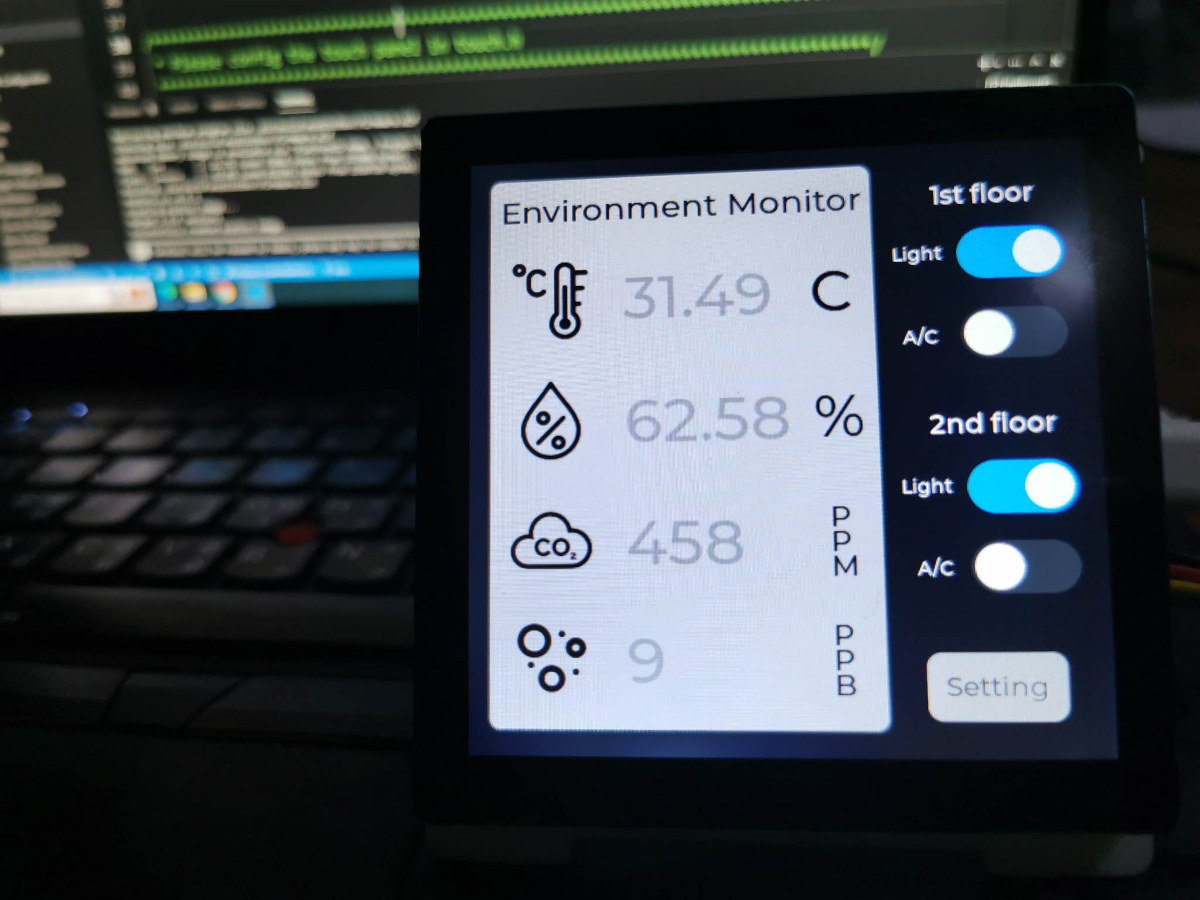We’ve previously checked out the hardware of the GEEKOM AS 6 mini PC, the retail version of the ASUS PN53, using an AMD Ryzen 9 6900HX CPU with unboxing, teardown, and the first boot in the first part of the review. We’ve now spent more time with Windows 11 Pro on GEEKOM AS 6 for a thorough review, it’s one of the fastest mini PCs we’ve tested so far, and there are only a few downsides as we’ll see in the second part of the review. Software overview and features testing Our GEEKOM AS 6 sample shipped with Windows 11 Pro 21H2 build 22000.1281, and Windows system information confirms we have a system with a 3.3 GHz AMD Ryzen 9 6900HX CPU and 32GB RAM. If we look at more details, we can confirm the reported specifications match the advertised ones with an 8-core/16-thread CPU, an ASUS PN53 motherboard, etc… […]
Review of BIGTREETECH Pad 7 Klipper pad with Creality Ender-3 Pro S1 3D printer
I received the BIGTREETECH Pad 7 7-inch Klipper pad and tablet PC for review earlier this month. I’ve already tested it with a Raspberry Pi CM4 as a Linux tablet PC with touchscreen, and I’ve now reinstalled the BTT CB1 Allwinner H616 system-on-module to run the pre-install Klipper OS and connect the Pad 7 to a Creality Ender-3 Pro S1 3D printer. When I first booted the Pad 7 it ended up with an error message from Klipper complaining about a missing configuration file. I connected to WiFi and update all software packages, but it didn’t help. It’s just because the Pad 7 needs to be configured for a specific printer. We can do so through the web dashboard accessible through a web browser going to http://btt-pad7.local (unless you’d changed the hostname in the system) We’ve got the same error shown in the web interface as Klipper needs to be […]
SenseCAP Indicator D1Pro Review – An ESP32-S3 & RP2040 IoT devkit with a 4-inch display, LoRa connectivity, sensors
The SenseCAP Indicator D1Pro is an IoT development kit based on ESP32-S3 WiFi & BLE chip, a Raspberry Pi RP2040 microcontroller, and offering LoRa connectivity through an SX1262 RF chip. It also features a 4-inch touchscreen display, two Grove interfaces with ADC & I2C, and two USB Type-C ports including one exposing GPIOs, and the D1Pro integrates tVOC and CO2 sensors, plus the kit ships with an external Grove AHT20 TH sensor for temperature and humidity measurements. SenseCAP Indicator D1Pro Features Dual MCUs and GPIO expansion with the Espressif ESP32-S3 and Raspberry Pi RP2040 microcontrollers and support for over 400 Grove-compatible modules. Real-time air quality monitoring thanks to the built-in tVOC and CO2 sensors, and an external Grove AHT20 TH sensor for more precise temperature and humidity readings. Local LoRa Hub for IoT Connectivity thanks to the integrated Semtech SX1262 LoRa chip for connecting LoRa devices to IoT platforms such […]
SONOFF TX Ultimate Review – A smart touch wall switch with innovative features
SONOFF has been producing a wide range of new products over the years, and since the beginning of the year, the company introduced various new products and features including the iHost Smart Home Hub local hub which no longer requires cloud connectivity. The one we are going to review is the Ultimate Smart Touch Wall Switch (also known as the SONOFF TX Ultimate). SONOFF stated that they wanted to provide a new experience with their smart switch. Initially, we couldn’t imagine what new experiences a smart switch could offer. When we think of SONOFF, we usually associate it with affordable smart switches that are durable and perform as expected, not stylish or feature-rich devices. However, the SONOFF TX Ultimate comes as a complete package with light, color, sound, and touch. SONOFF has also expanded the touch area, so there’s no need to worry about missing the button while pressing it. […]
Using BTT Pad 7 touchscreen display with Raspberry Pi CM4
The BTT Pad 7, or BIGTREETECH Pad 7 in full, is a 7-inch touchscreen display that ships with the CB1 Allwinner H616 system-on-module compatible with Raspberry Pi CM4. The display is mostly designed for 3D printers with its SPI and CAN Bus interfaces, but it can also be used as a standard tablet PC. So today, I’ll switch the CB1 with a Raspberry Pi CM4 Lite module and report my experience doing the conversion and using it as a Raspberry Pi CM4 tablet PC running Raspberry Pi OS, and test it with a 3D printer with Klipper in another post later on. Installing a Raspberry Pi CM4 (Lite) module in the BTT Pad 7 We’ll need the Pad 7, a Raspberry Pi CM4, and a few tools. The first step is to remove the red heatsink by loosening four screws with a 2.0mm hex key, as well as the cover […]
Beelink EQ12 Review – An Intel Processor N100 mini PC tested with Windows 11, TrueNAS, pfSense, Ubuntu, and more
Beelink’s new EQ series of mini PCs form their base product range and feature low-powered Jasper Lake and Alder Lake-N processors with relatively basic port and memory/storage configurations. Perhaps more importantly, they are also the cheapest mini PCs they offer. Having recently announced the EQ12 mini PC featuring an Intel Processor N100 ‘Alder Lake-N’ CPU with up to 16GB RAM, Beelink have now sent one for review. Whilst I’ll cover the basic Windows operation and performance, I’ll also explore how this new mini PC performs when used as an integrated router and NAS. Beelink EQ12 specifications Beelink list the EQ12 specifications as: It is worth noting that the Processor N100 processor only supports a single memory channel and that according to Intel’s specification for the processor, the maximum memory supported is only 16 GB. Intel’s specification for the number of graphical execution units (EUs) also states 24 however software such […]
GEEKOM AS 6 (Ryzen 9 6900HX) mini PC review – Part 1: unboxing, teardown, and first try
GEEKOM AS 6 is a mini PC based on AMD Ryzen 6000HX CPU with up to 64GB dual-channel DDR5 RAM memory, two PCIe Gen 4×4 M.2 2280 SSD sockets, WiFi 6E and Bluetooth 5.2, and a range of ports, made in collaboration with ASUS (that’s the PN53 model) and which the company advertises as an alternative to the Intel NUC 13 Pro “Arena Canyon”. GEEKOM sent us a sample of the AS 6 mini PC with an AMD Ryzen 9 6900HX octa-core processor with Radeon 680M graphics, 32GB RAM and a 1TB SSD for review, and in the first part of the review, we’ll look at the specifications, check the package content, teardown the system, and give it a first try, before testing it more thoroughly with the pre-installed Windows 11 and Ubuntu 22.04 in the next parts. GEEKOM AS 6 specifications Here’s how GEEKOM AS 6 specifications compare the […]
Review of MaTouch_ESP32-S3 4-inch Display Demo Kit with sensors, Arduino, LVGL graphics library
Makerfabs MaTouch_ESP32-S3 4-inch Display Demo Kit is an ESP32-S3 development board with a 4-inch touchscreen display, a TVOC sensor, and a thermal camera. It can be used to make various projects such as electronic photo frames. air quality monitors, or patient screening devices MaTouch_ESP32-S3 4-inch display demo kit unboxing When we unpack the box, we will find the device as in the picture, consisting of the following items: The mainboard of the MaTouch_ ESP32-S3 4-inch Display with the following specifications: Controller – ESP32-S3-WROOM-1, PCB Antenna, 16MB Flash, 8MB PSRAM, ESP32-S3-WROOM-1-N16R8 Wireless – WiFi & Bluetooth 5.0 Storage – MicroSD card slot LCD 4.0-inch IPS display with 480×480 resolution, 50+ FPS RGB 5/6/5+ SPI interface using ST7701S controller. 5 Points Touch, Capacitive via GT911 touch panel driver. Audio – MAX98357A USB – Dual USB Type-C (one for USB-to-UART and one for native USB); USB to UART Chip: CP2104 Expansion – 2x […]


